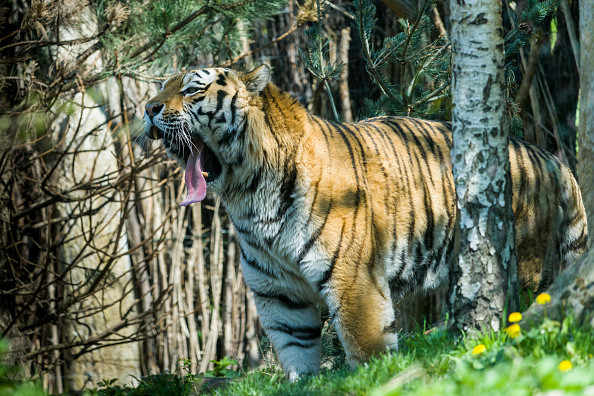Poaching remains number one threat to tigers - both in the wild and in captivity
Just under 3,900 tigers remain in the wild, and captive animals are now also targeted by poachers.

Illegal trade and trafficking of tigers show no signs of abating, a new report by wildlife trade monitoring network TRAFFIC has shown. On average, more than two animals were seized each week across the world between 2000 and 2015.
Tigers are some of the most threatened species in the world. It is estimated that just under 3,900 of these big carnivores remain in the wild today and various studies have suggested that the known tiger range has decreased by 42% between 2006 and 2014.
There has been an international ban on the trade in tigers and their products for decades. However, it has not been entirely effective, as poaching for the illegal trade remains the greatest direct threat to tigers' survival today.
It is in fact the main drivers of the dramatic decline in the number of animals globally. A total of 801 seizures of tigers and tiger products across Asia were recorded since 2000.
Laos, Thailand and Vietnam
Most of these seizures have occurred in India, but there also increasing evidence that traffickers are back exploiting a previously-identified trade route stretching from Thailand to Vietnam through Laos.
The TRAFFIC report suggests that the most important evolution in recent years has been that a lot of the traffic has not only targeted wild tigers but also animals originating from captive breeding operations.
At least 30% of the tigers seized in 2012-2015 were known to be of captive-sourced tigers. In this context, it is not surprising that Thailand, Vietnam and Laos have seen an increase in trafficking. Indeed, in these three countries, the number of tiger farms has risen since the beginning of the 21st century.

Legal shortcomings allow tigers to be trafficked from both wild and captive sources, despite the international ban in place, but probably the biggest challenge to stopping this illegal trade is the lack of law enforcement effectiveness at all levels, in the countries involved.
To make sure tigers survive in the wild as well as in captivity, these countries must therefore take vigorous steps to improve law enforcement and address the issue of criminal impunity.
At the 17th Conference of the Parties (CoP17) to the Convention on International Trade in Endangered Species of Wild fauna and flora, which took place on the last week of September, measures to stop trafficking were discussed.
While progresses have been made – with Laos announcing it would phase out its tiger farms and Thailand cracking down on the infamous Tiger Temple and pledging to investigate all tiger breeding facilities – more remains to be done, especially in Vietnam.
"Criminal networks are increasingly trafficking captive bred tigers around Asia, undermining law enforcement efforts and helping to fuel demand (...)" concluded Ginette Hemley, WWF head of CITES delegation. "Laos and Thailand have announced steps in the right direction but they need to act now and other countries should swiftly follow the same path marked 'close all tiger farms'."
© Copyright IBTimes 2025. All rights reserved.






















